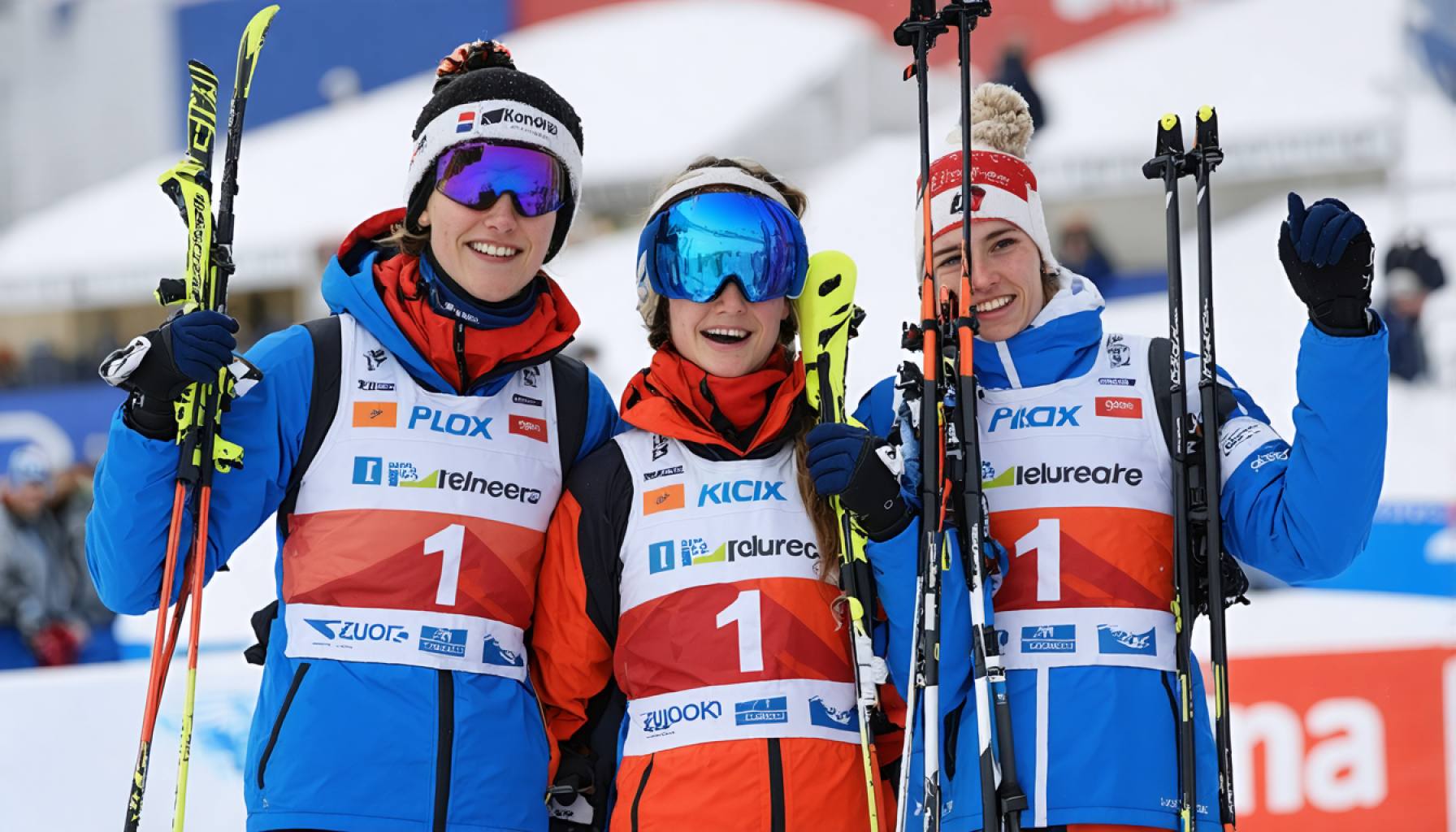- The French biathlon team dominated the competition, with Julia Simon claiming gold in the individual event through a near-perfect performance, shooting 19 out of 20 targets.
- Lou Jeanmonnot added to the French success by winning bronze, showcasing intense focus and determination on the snowy course.
- These wins bring France’s total medal count to seven, highlighting their excellence in the sport.
- High-profile athletes, including Franziska Preuss and Elvira Öberg, fell short due to missed shots, missing their chance at glory.
- The French triumph exemplified resilience, precision, and exceptional skill amidst challenging alpine conditions.
As the sun dipped behind the alpine peaks, the roar of excitement from the biathlon arena resonated through the crisp evening air. Athletes in colorful suits cut through the snow with razor-sharp focus, their breath forming fleeting clouds in the cold.
The French team captivated fans during a thrilling day of competition, where precision met athleticism on the snowy tracks. Julia Simon, with an electrifying performance, secured the golden crown, establishing herself as the world’s best in the individual event. Her relentless 19-out-of-20 shooting left competitors in awe, cementing her status as a biathlon maestro.
Joining Simon on the podium, Lou Jeanmonnot claimed the bronze. Her fierce determination was palpable as she pushed through the course, eyes locked on the target, skis slicing through the snow with a symphonic rhythm. With these triumphs, the French delegation has increased their medal haul to a remarkable seven, each gleaming like precious gems in the twilight.
While the French stars sparkled, some favorites faltered. The likes of Franziska Preuss and Elvira Öberg, from Germany and Sweden respectively, stumbled on their final shots, their aspirations for glory evaporating into the thin mountain air.
As the world turned its eyes to the rugged slopes, the French team delivered a masterclass in resilience and skill, ensuring a jubilant evening for the iconic blue colors.
In a festival of speed and skill, the French biathletes proved once more that the world stage belongs to those with grit, precision, and the heart to rise above the rest.
Unlock the Secrets Behind Biathlon Success: Mastering Precision and Speed
Overview: Biathlon—A Unique Winter Sport
The biathlon is a challenging winter sport that combines cross-country skiing with rifle shooting. Originating as a military exercise, biathlon demands strength, endurance, and precise mental focus. Athletes race on skis across varied terrain, pausing at shooting ranges to fire at targets. Each missed shot incurs a penalty, emphasizing the need for both speed and accuracy.
How-To Steps & Life Hacks: Mastering Biathlon Techniques
1. Focus on Skiing Technique:
– Invest in professional coaching to refine your cross-country skiing form.
– Practice interval training to improve endurance and speed over short and long distances.
2. Shooting Mastery:
– Join a shooting club to access facilities and expert guidance.
– Engage in dry-fire practice off-range to enhance trigger control and stability.
3. Mental Simulation:
– Utilize visualization techniques to mentally rehearse race conditions.
– Incorporate mindfulness training to build focus and reduce performance anxiety.
Real-World Use Cases: Beyond the Competition
– Military Training: Biathlon’s roots lie in military exercise, and it remains a valuable training methodology for soldiers in snowy terrains.
– Outdoor Hobby: Biathlon courses are increasingly available at winter resorts, allowing enthusiasts to experience the sport recreationally.
Market Forecasts & Industry Trends
According to Market Research Future, the winter sports industry is poised for growth, with increasing interest in niche sports like biathlon. The rise of eco-tourism and expanding winter sports facilities contribute to its popularity.
Features, Specs & Pricing: Biathlon Equipment
– Skis & Bindings: Choose lightweight, durable skis priced around $200–$600 that suit the track and snow conditions.
– Rifles: A standard biathlon rifle costs between $3,000 and $5,000, engineered for precision with lightweight materials.
– Suits & Boots: High-performance suits optimize aerodynamics, with prices ranging from $100 to $500, while boots supportive of ankle stability range from $150 to $400.
Pros & Cons Overview
Pros:
– Combines cardio and strength training, improving overall fitness.
– Enhances mental concentration and stress management skills.
Cons:
– Equipment and training costs can be prohibitive for beginners.
– Accessibility is limited to regions with appropriate weather conditions and facilities.
Controversies & Limitations
Critics argue that the high cost of equipment and limited access to professional coaching restrict participation to wealthier individuals or regions. Environmental concerns also arise from the construction of facilities, although sustainable practices are increasingly adopted.
Actionable Recommendations and Quick Tips
– Get Started Affordably: Rent equipment and try biathlon at a local winter sports center before investing in gear.
– Join a Community: Engage with online forums or local clubs to exchange tips and arrange practice sessions.
Conclusion
Embracing the biathlon as a hobby or pursuit opens doors to a physically and mentally enriching activity. With the right preparation and dedication, you can experience the thrill of success in mastering both precision and speed on the snowy stage. Whether you’re competing or simply enjoying the challenge, the love for this unique sport continues to grow worldwide.
Suggested Related Links
Check the International Biathlon Union’s official website at biathlonworld.com for more information on upcoming events and training opportunities.
